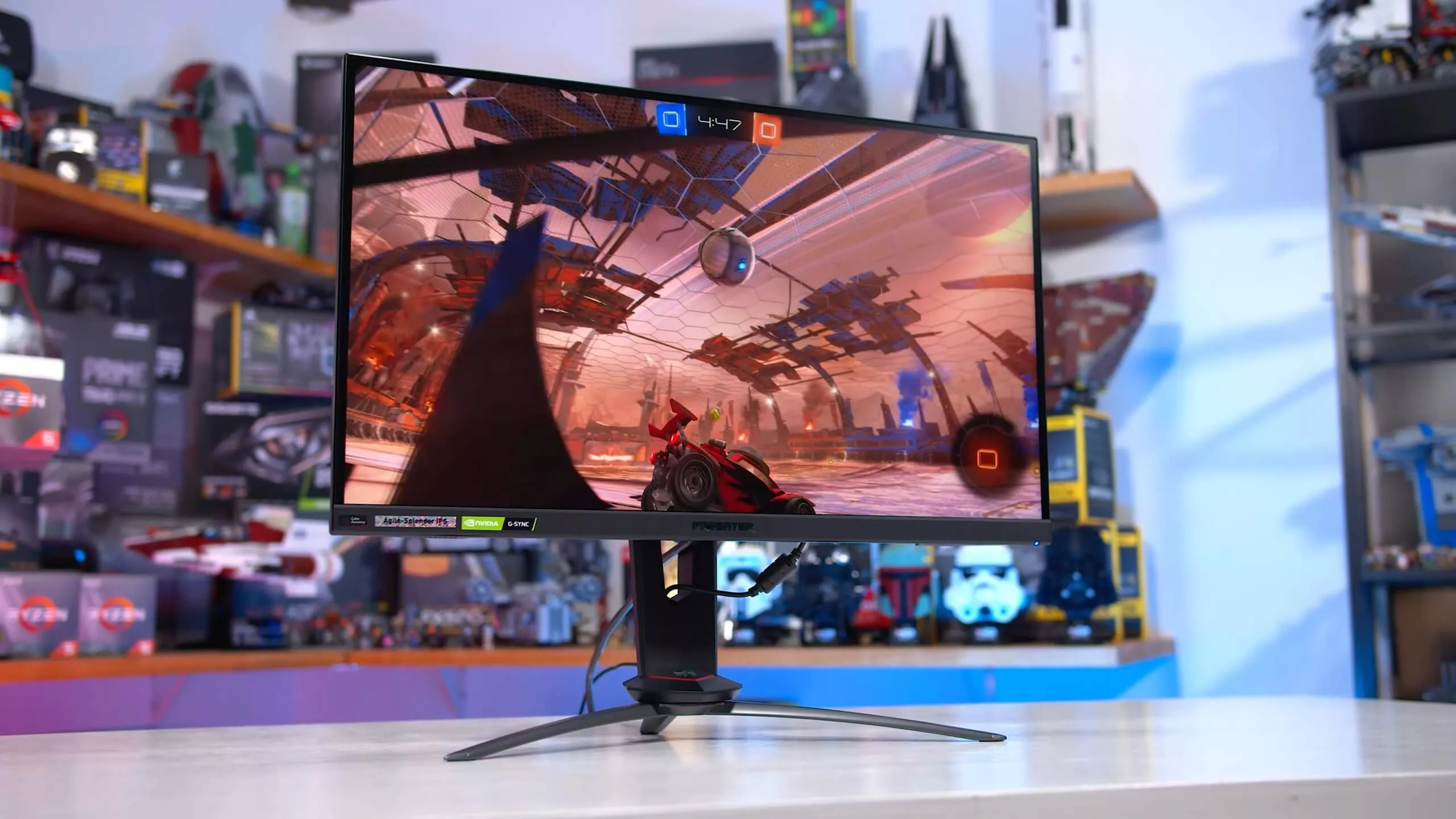Have you ever found yourself squinting at your monitor, trying to discern a line of code, a design element, or even just the text in an email? I have. The first time I realized the impact resolution could have on digital experience, I was a fresh-faced intern working on a minuscule 1366×768 monitor.
Back then, larger resolution was a luxury few could afford, but fast forward a few years, and we have 4K monitors becoming mainstream. But with the rise of this technology, a question arises – Can a 4K monitor run at 1440p? In this blog post, we’ll talk about this question, breaking down the components to help you understand why the answer is more complex than a simple yes or no.
Display Resolutions Explained
Before we can answer the question, let’s take a step back to understand what we’re dealing with.
Display resolution is essentially a measure of how many distinct pixels a screen can display, both horizontally and vertically. Think of pixels as tiny squares of color; combined, they create the images you see on your screen. The more pixels your screen can display, the more detailed and sharper the images.
For example, a 1920×1080 resolution, also known as Full HD, means the screen can display 1920 pixels horizontally and 1080 pixels vertically. On the other hand, a 4K monitor, boasting a resolution of 3840×2160 pixels, provides four times the pixels of Full HD.
Importance of Display Resolution
Resolution is pivotal as it directly influences image clarity and detail. High-resolution monitors offer sharper images, more workspace, and usually a more immersive viewing experience. These are important factors for professionals in various fields, including graphic design, video editing, gaming, and even everyday users who desire a better visual experience.
- Graphic designers need the precision offered by high-resolution screens to work on their designs meticulously.
- Video editors benefit from high resolution as it provides a more accurate representation of their work, enabling more detailed editing.
- For gamers, a high-resolution monitor can translate into a more immersive and realistic gaming experience.
4K Monitors and 1440p: A Compatibility Question
Now that we understand display resolution and its importance let’s dive into the main question at hand.
Running 1440p on a 4K Monitor
Yes, a 4K monitor can technically run at a lower resolution, such as 1440p. However, the results may not be as satisfactory as you might expect. The concept behind this is called ‘downscaling’.
Downscaling, in layman’s terms, is when you reduce the resolution of a monitor to a level below its native resolution. While this is technically possible, it leads to a phenomenon known as ‘interpolation.’ The monitor’s firmware has to calculate and fill in the missing pixels, often resulting in a blurry or less crisp image compared to a native 1440p display. This is because the screen is designed to deliver its best performance at its native resolution.
That being said, there are a few scenarios where running a 4K monitor at 1440p might be advantageous:
- Improved Performance: Running games at a lower resolution can lead to increased frame rates, which may result in smoother gameplay for games that are graphically intensive.
- Compatibility: Some older applications and games may not be optimized for 4K resolution and might perform better at a lower resolution.
Does it Make Sense to Run a 4K Monitor at 1440p?
Whether it makes sense or not to run a 4K monitor at 1440p depends on your specific use case. If you’re using the monitor for general productivity tasks, it’s probably best to run it at its native resolution for the best visual clarity.
On the other hand, if you’re a gamer and are struggling to maintain high frame rates at 4K, downscaling to 1440p can offer a smoother gaming experience. However, remember that the image quality might not be as crisp as it would be on a native 1440p monitor.
A Closer Look at Interpolation
We’ve mentioned the term ‘interpolation’ in passing, but let’s dig a little deeper to understand this phenomenon and its effects.
What is Interpolation?
When a display scales down from its native resolution to a lower one, it employs a process called interpolation. This process involves the monitor’s firmware making estimations to fill in the ‘missing’ pixels that result from the change in resolution. In essence, it’s an educated guess about what the picture should look like at a lower resolution.
The problem arises because this ‘guess’ isn’t always perfect. Pixels are physical entities, and they can’t be precisely split or merged to fit non-native resolutions. This can lead to what’s known as ‘fractional pixel rendering,’ where one pixel tries to display the color information of multiple pixels. The result is usually an image that’s less sharp or less clear than it would be at the display’s native resolution.
The Effects of Interpolation
Interpolation affects the sharpness and clarity of the images on your screen. This can be particularly noticeable when viewing text or fine details, which can appear blurry or smeared. For general web browsing or document editing, this can lead to eye strain as your eyes work harder to decipher the blurred text.
In contrast, for video content or gaming, the effects of interpolation might be less noticeable, especially during fast-paced action, where the viewer or player may not notice the slight loss of detail. Nevertheless, for the best image quality, running the monitor at its native resolution is advisable.
The Role of Monitor Size and Viewing Distance
Monitor size and viewing distance also play a crucial role in perceived image quality when running a 4K monitor at 1440p.
Monitor Size
The size of your monitor directly influences the pixel density, i.e., the number of pixels packed into an inch of the screen. A larger monitor with a higher resolution will have a higher pixel density, resulting in sharper images. This is why 4K resolution looks particularly good on larger monitors.
However, when you downscale the resolution on a large 4K monitor, the lower pixel density can make the effects of interpolation more noticeable. On a smaller monitor, these effects might be less apparent due to the higher pixel density.
Viewing Distance
The distance from which you view your monitor also affects how you perceive the image quality. The closer you are, the more likely you are to notice any loss in detail due to downscaling. Conversely, if you view your monitor from a greater distance, the effects of interpolation may be less noticeable.
For instance, if you’re using a large 4K TV as a monitor and sitting a good distance away, running it at 1440p might not noticeably affect your viewing experience.
Making Your Decision
Understanding all the factors that go into how a 4K monitor handles 1440p, the question still remains: Should you do it?
The decision ultimately depends on what you primarily use your monitor for, your hardware capabilities, and your personal preference for performance vs. image quality. For some, the increased performance in games or compatibility with certain applications may justify the loss in image clarity. For others, the best possible image quality might be the priority.
Final Thoughts
Ultimately, while a 4K monitor can indeed run at 1440p, doing so might not always offer the best visual experience due to the interpolation effect. The decision to downscale depends on your individual requirements and the balance you wish to strike between performance and visual fidelity.
Remember, technology exists to serve us, not confuse us. And the beauty of it lies in its flexibility to cater to different needs. I hope this article helped you understand the intricacies of display resolution and you now feel more informed about making the best choice for your specific needs.

